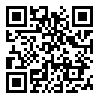Volume 8, Issue 1 (6-2021)
jhbmi 2021, 8(1): 12-23 |
Back to browse issues page
Download citation:
BibTeX | RIS | EndNote | Medlars | ProCite | Reference Manager | RefWorks
Send citation to:



BibTeX | RIS | EndNote | Medlars | ProCite | Reference Manager | RefWorks
Send citation to:
Dehghandar M, Hassani Bafrani A, Dadkhah M, Qorbani M, Kelishadi R. Diagnosis of Obesity and Hypertension in Isfahani Students Using Artificial Neural Network. jhbmi 2021; 8 (1) :12-23
URL: http://jhbmi.ir/article-1-530-en.html
URL: http://jhbmi.ir/article-1-530-en.html
Assistant Professor, Applied Mathematics Dept., Payame Noor University, Tehran, Iran
Abstract: (3996 Views)
Introduction: Obesity and hypertension are community health problems. The objective of this study was to diagnose obesity and hypertension in Isfahani students by artificial neural network.
Method: The present study was a diagnostic and predictive one that used the information of 460 students aged 7-18 years old in Isfahan to design a neural network with 11 input variables (age, sex, weight, height, waist circumference, body mass index, waist to height ratio, abdominal obesity, physical activity, genetics, and unhealthy eating behaviors) and three output variables of obesity, systolic blood pressure, and diastolic blood pressure. Conjugate Gradient and Levenberg-Marquardt algorithms were used for network training.
Results: Selected neural network with the Levenberg algorithm has 16 hidden neurons in the diagnosis of obesity and high diastolic blood pressure and 14 hidden neurons in the diagnosis of high systolic blood pressure. The sensitivity, specificity, and accuracy of the network in the diagnosis of obesity were 0.9591, 0.9975, and 0.9934, respectively, and these values were 0.8461, 0.9949, and 0.9739 for high systolic blood pressure and 0.7952, 0.9973, and 0.9609 for high diastolic blood pressure. It was observed that the designed network detects obesity in children and adolescents with a high accuracy of 95% and diagnoses systolic and diastolic blood pressures with a high accuracy of 84% and 79%, respectively.
Conclusion: According to the results, about 83% of obese adolescents have hypertension. Therefore, there it is necessary to design educational programs in the field of behavioral changes, including physical activity along with interventions in nutrition planning for students.
Method: The present study was a diagnostic and predictive one that used the information of 460 students aged 7-18 years old in Isfahan to design a neural network with 11 input variables (age, sex, weight, height, waist circumference, body mass index, waist to height ratio, abdominal obesity, physical activity, genetics, and unhealthy eating behaviors) and three output variables of obesity, systolic blood pressure, and diastolic blood pressure. Conjugate Gradient and Levenberg-Marquardt algorithms were used for network training.
Results: Selected neural network with the Levenberg algorithm has 16 hidden neurons in the diagnosis of obesity and high diastolic blood pressure and 14 hidden neurons in the diagnosis of high systolic blood pressure. The sensitivity, specificity, and accuracy of the network in the diagnosis of obesity were 0.9591, 0.9975, and 0.9934, respectively, and these values were 0.8461, 0.9949, and 0.9739 for high systolic blood pressure and 0.7952, 0.9973, and 0.9609 for high diastolic blood pressure. It was observed that the designed network detects obesity in children and adolescents with a high accuracy of 95% and diagnoses systolic and diastolic blood pressures with a high accuracy of 84% and 79%, respectively.
Conclusion: According to the results, about 83% of obese adolescents have hypertension. Therefore, there it is necessary to design educational programs in the field of behavioral changes, including physical activity along with interventions in nutrition planning for students.
Type of Study: Original Article |
Subject:
Artificial Intelligence in Healthcare
Received: 2020/10/8 | Accepted: 2021/01/4
Received: 2020/10/8 | Accepted: 2021/01/4
audio file [MP3 637 KB] (172 Download)
Send email to the article author
| Rights and permissions | |
 |
This work is licensed under a Creative Commons Attribution-NonCommercial 4.0 International License. |




